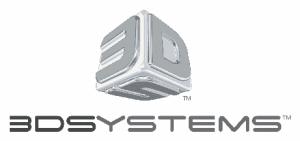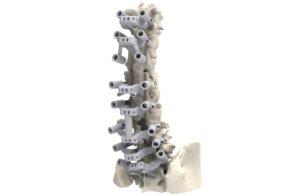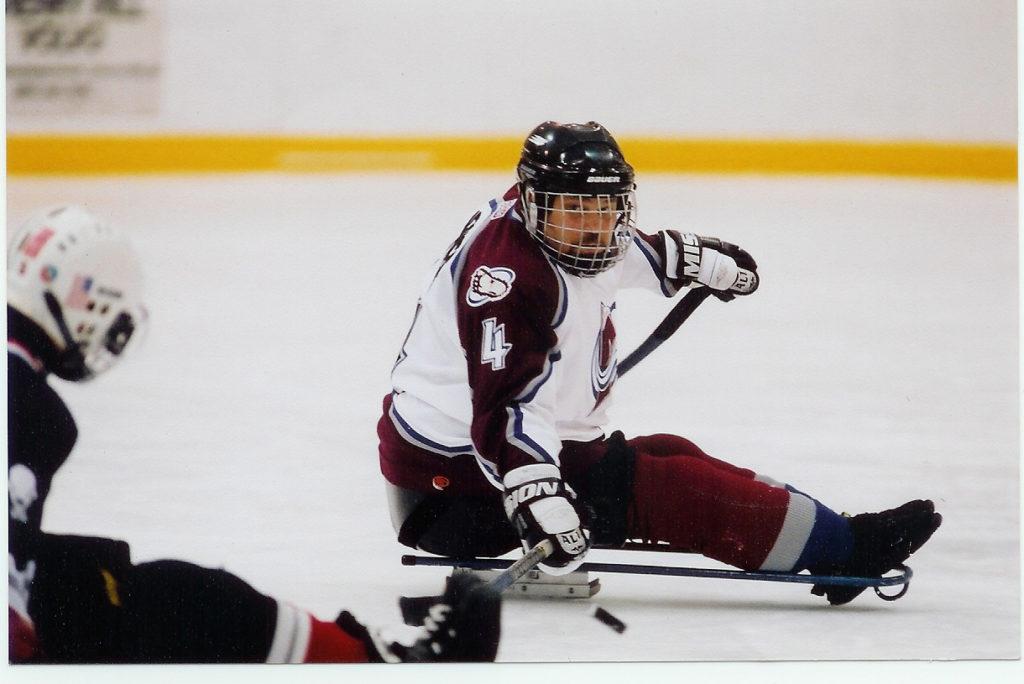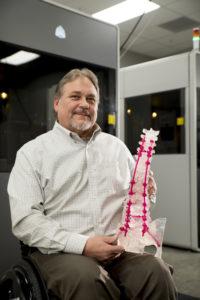 One field that has benefited more than any from the emergence of 3D printing is the medical industry. Whether it be surgical preparation, assistive devices, or bioprinting with stem cells, additive manufacturing has reshaped the landscape of healthcare throughout the world. In fact, it’s also helped one of the largest 3D printing companies to keep their head above water during tough times. After a disappointing financial start to this year, more recently 3D Systems managed to show income growth with their healthcare solutions in their 2016 Q2 report, though printer sales continued to weigh that increase down.
One field that has benefited more than any from the emergence of 3D printing is the medical industry. Whether it be surgical preparation, assistive devices, or bioprinting with stem cells, additive manufacturing has reshaped the landscape of healthcare throughout the world. In fact, it’s also helped one of the largest 3D printing companies to keep their head above water during tough times. After a disappointing financial start to this year, more recently 3D Systems managed to show income growth with their healthcare solutions in their 2016 Q2 report, though printer sales continued to weigh that increase down.
Their improved strength in the medical market is partially derived from the recently opened Healthcare Technology Center, which has certainly contributed to the overall enhancement of their end-to-end digital manufacturing workflow for healthcare. Earlier this week, 3D Systems proved this strength by announcing the successful spinal surgery of national sled hockey champion Mark Weimer. The 3D printing company’s healthcare workflow was essential to the operation, allowing Dr. George Frey of the Englewood, Colorado-based Mighty Oak Medical to replicate the patient’s complex anatomy for surgical planning, instrumentation, and reference.
Back in 1984, Weimer was left partially paralyzed following an accident involving construction scaffolding, but that didn’t stop him from becoming a world champion athlete. Weimer started training on a sled hockey team in 1996, and eventually joined the US National Team just four years later. After becoming the star of the Colorado Avalanche Sled Hockey team and winning consecutive championships in 2010 and 2011, the paraplegic athlete decided to retire, but those active years still managed to do a great toll on his body. During his early years on the National Team, Weimer had a spinal fusion surgery to combat the loss of muscle strength he had been experiencing in his right arm. But over time, this operation and detrimental neurological condition eventually led to the compression of his nerves and spinal cord, resulting in pain and bowel issues.
 To help alleviate the pain and other issues Weimer had been experiencing, 3D Systems used the patient’s CT scan data to generate a detailed 3D model of his spine that included both his natural anatomy and the implanted structures from previous surgeries. This enabled Dr. Frey to create a unique, patient-specific surgical approach and plan the navigation to be as safe and efficient as possible. The digital representation of the CT scan was utilized by Mighty Oak Medical engineers to determine the trajectory of each pedicle screw and also design accurate surgical guides. 3D Systems then used their ProX 800 Stereolithography 3D printer to produce these guides and a foot-long model of Weimer’s spine. The material used was a plastic that was able to be sterilized for the operating room.
To help alleviate the pain and other issues Weimer had been experiencing, 3D Systems used the patient’s CT scan data to generate a detailed 3D model of his spine that included both his natural anatomy and the implanted structures from previous surgeries. This enabled Dr. Frey to create a unique, patient-specific surgical approach and plan the navigation to be as safe and efficient as possible. The digital representation of the CT scan was utilized by Mighty Oak Medical engineers to determine the trajectory of each pedicle screw and also design accurate surgical guides. 3D Systems then used their ProX 800 Stereolithography 3D printer to produce these guides and a foot-long model of Weimer’s spine. The material used was a plastic that was able to be sterilized for the operating room.
“Due to his previous surgical procedures, there were significant imaging artifacts within the CT scan that required extensive medical image processing in order to render the anatomical area of interest into three-dimensional digital models,” Chris Beaudreau, Director of Medical Services at 3D Systems. “It was also going to be an extensive spinal procedure, so instead of modeling two or three vertebrae, we needed to process nine vertebrae, the sacrum bone at the base of the spine, and both hips.”
The surgery, which was completed on July 22, 2016, helped alleviate most of the 63-year-old’s pain problems, and Weimer was once again able to continue his current work in the IT field, as well as his hand cycling hobby. Not only did 3D Systems’ end-to-end digital manufacturing workflow for healthcare help a world champion sled hockey athlete get back to his life, they’ve also helped Mighty Oak Medical bring their proprietary FIREFLY Technology to the medical market, which is used for to create pedicle screw guidance. All in all, 3D Systems seems to have found more than just a quick profit in the medical field, and has started solidifying itself as a pioneer in healthcare solutions for years to come. Discuss further in the Spinal Surgery forum over at 3DPB.com.
[Source/Images: 3D Systems]Subscribe to Our Email Newsletter
Stay up-to-date on all the latest news from the 3D printing industry and receive information and offers from third party vendors.
You May Also Like
Gorilla Sports GE’s First 3D Printed Titanium Cast
How do you help a gorilla with a broken arm? Sounds like the start of a bad joke a zookeeper might tell, but it’s an actual dilemma recently faced by...
Nylon 3D Printed Parts Made More Functional with Coatings & Colors
Parts 3D printed from polyamide (PA, Nylon) 12 using powder bed fusion (PBF) are a mainstay in the additive manufacturing (AM) industry. While post-finishing processes have improved the porosity of...
$25M to Back Sintavia’s Largest Expansion of Metal 3D Printing Capacity Since 2019
Sintavia, the digital manufacturing company specializing in mission-critical parts for strategic sectors, announced a $25 million investment to increase its production capacity, the largest expansion to its operations since 2019....
Velo3D Initiates Public Offering in a Bid to Strengthen Financial Foundations and Drive Future Growth
Velo3D (NYSE: VLD) has been among a number of publicly traded 3D printing firms that have attempted to weather the current macroeconomic climate. After posting a challenging financial report for 2023,...































